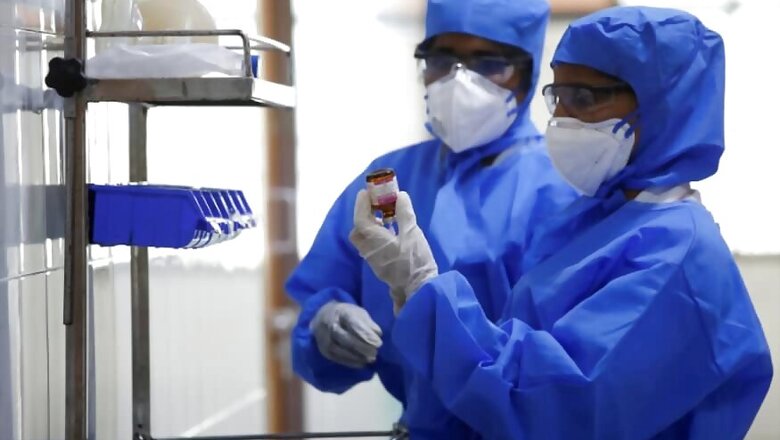
views
India and the world suffered through various pandemics in different times of history and responded to them in various ways, recovered and re- emerged after heavy human losses. From the Antonine Plague between the years 165 and 180 which was a disease like smallpox or measles, the New World Smallpox(1520), Yellow Fever(1800), Indian Plague which erupted violently in 1817 in Bengal, Russian Flu (1889-90), to swine flu and COVID-19, we have a lengthy history of experiences of disease outbreaks.
The scientists, microbiologists and doctors dealt with them in their own way and the common people defined, understood and responded to them in their own. Many historians have documented people's perception and how they dealt culturally with these difficult times of human history. Various gods, goddess and cultural narratives emerged during the days of pandemics in India. After 1520, when smallpox (chechak) emerged in various societies of the world and reached to India through trade and other contacts, a goddess, Shitala, emerged as the deity who could cure the disease.
On the way from Prayagraj to Lucknow, near Kara, there's a huge temple of Shitala Devi, also called 'Shitali Maiya’ in local parlance. People of this region worship the goddess in the winter and spring which is the time smallpox often rears up. There are several temples of this deity in various parts of northern India, West Bengal, Nepal, Pakistan, and Bangladesh. One will also find various versions of Shitala in other parts of South Asia with myriad local names.
In southern parts of India, there is a tradition to worship Mariyyama, who is believed to cure smallpox and other epidemics. The temple of Shitala, the name meaning 'the one who cools', contains a Neem tree near the place of the deity, believed to soothe a person suffering from the skin burning up due to the smallpox infection. There is a tradition of singing mangal kavya (ausipicious song), and in northern and central India devotees sing folk songs to make the devi happy.
Similarly, when plague spread in India and moved to other parts of the world, it became known as the Indian Plague. Historians documented that it erupted very violently in Bengal in 1817 but originated and transmitted much earlier in native people through travel of military troops and other types of contact. In Bengali society, this epidemic was known as Olaotha. Locals used to worship a goddess named Ola Bibi to save them from the plague.
Even British army personnel turned devotees, and also a British merchant, known as Duncan, gave Rs 4,000 around 1720 to build a temple of Ola Bibi, in a forest area of Bengal near Kolkata. He later gave Rs 6,000 to erect her temple in Kolkata. Not just in India, but in Europe also, a section of people were worshipping such deities, and shrines were built during the 18th century. For instance, in Poland, people would go to roadside shrines seeking relief from such epidemics.
Even today in India, many people have faith that such divine phenomenon may save them from viral diseases. The head priest of the famous Maihar Devi temple in Madhya Pradesh composed a Hanuman Mantra to save people from the coronavirus. This composition, called ‘Hanuman-Bisa’, is a collection of 20 mantras akin to the Hanuman Chalisa. Similarly many havans and rituals were organised in different parts of India before the nationwide lockdown came into effect. On the way to Vaishno Devi,there is a newly built place of worship with a sign board that says "Corona ki jhaad, 10 rupaiye mein (treatment of corona in 10 rupees).
Many folk songs, and children's songs are being composed in rural areas based on the coronavirus. One that I heard a few days ago in a village from a boy was "Corona ki maa murdabad, corona ka baap murdabad" (may the mother and father of corona die). Added to these are the very creative and cultural advice and prescriptions on COVID-19 that spring up on social media sites daily. Because rationality and cultural beliefs exist next to each other in India.
(The author is professor and director of GB Pant Social Science Institute, Prayagraj. Views are personal)















Comments
0 comment